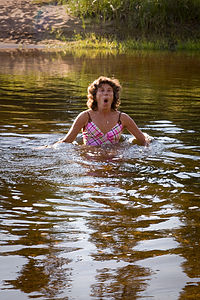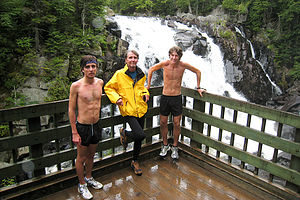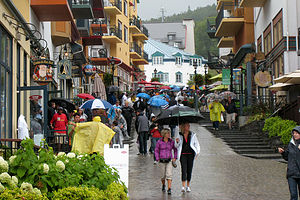- Home
- About
- Map
- Trips
- Bringing Boat West
- Migration West
- Solo Motorcycle Ride
- Final Family XC Trip
- Colorado Rockies
- Graduates' XC Trip
- Yosemite & Nevada
- Colorado & Utah
- Best of Utah
- Southern Loop
- Pacific Northwest
- Northern Loop
- Los Angeles to NYC
- East Coast Trips
- Martha's Vineyard
- 1 Week in Quebec
- Southeast Coast
- NH Backpacking
- Martha's Vineyard
- Canadian Maritimes
- Ocracoke Island
- Edisto Island
- First Landing '02
- Hunting Island '02
- Stowe in Winter
- Hunting Island '01
- Lake Placid
- Chesapeake
- Provincetown
- Hunting Island '00
- Acadia in Winter
- Boston Suburbs
- Niagara Falls
- First Landing '99
- Cape Hatteras
- West Coast Trips
- Burning Man
- Utah Off-Roading
- Maui
- Mojave 4WD Course
- Colorado River Rafting
- Bishop & Death Valley
- Kauai
- Yosemite Fall
- Utah Off-Road
- Lost Coast
- Yosemite Valley
- Arizona and New Mexico
- Pescadero & Capitola
- Bishop & Death Valley
- San Diego, Anza Borrego, Joshua Tree
- Carmel
- Death Valley in Fall
- Yosemite in the Fall
- Pacific Northwest
- Utah Off-Roading
- Southern CA Deserts
- Yosemite & Covid
- Lake Powell Covid
- Eastern Sierra & Covid
- Bishop & Death Valley
- Central & SE Oregon
- Mojave Road
- Eastern Sierra
- Trinity Alps
- Tuolumne Meadows
- Lake Powell Boating
- Eastern Sierra
- Yosemite Winter
- Hawaii
- 4WD Eastern Sierra
- 4WD Death Valley +
- Southern CA Deserts
- Christmas in Tahoe
- Yosemite & Pinnacles
- Totality
- Yosemite & Sierra
- Yosemite Christmas
- Yosemite, San Diego
- Yosemite & North CA
- Seattle to Sierra
- Southwest Deserts
- Yosemite & Sierra
- Pacific Northwest
- Yosemite & South CA
- Pacific Northwest
- Northern California
- Southern Alaska
- Vancouver Island
- International Trips
- Index
- Tips
- Books
- Photos/Videos
- Search
- Contact
Mont-Tremblant, QB
Friday, August 20, 2010 - 1:30pm by Lolo
34 miles and 1 hour from our last stop - 1 night stay
Travelogue
 Lolo creating "Swim Activity" - AJGResearching Mont-Tremblant had not been an easy task, as the words “Mont-Tremblant” were rather freely used as part of the name for every destination within a 50 mile radius. There was Mont-Tremblant, the mountain itself; Mont-Tremblant Resort; Mont-Tremblant Station, Mont- Tremblant pedestrian village, the old village of Mont-Tremblant, Centre-Ville (downtown) Mont-Tremblant, and finally, what I was looking for: Parc National du Mont-Tremblant. I was exhausted by the time I found information on it.
Lolo creating "Swim Activity" - AJGResearching Mont-Tremblant had not been an easy task, as the words “Mont-Tremblant” were rather freely used as part of the name for every destination within a 50 mile radius. There was Mont-Tremblant, the mountain itself; Mont-Tremblant Resort; Mont-Tremblant Station, Mont- Tremblant pedestrian village, the old village of Mont-Tremblant, Centre-Ville (downtown) Mont-Tremblant, and finally, what I was looking for: Parc National du Mont-Tremblant. I was exhausted by the time I found information on it.
I had made reservations (well in advance) for the Sablonniere Campground, so our route took us past Lac Superieur and into the southwestern corner of the park, known as La Diable Sector. The park is divided into three major sectors: La Diable, La Pimbina, and L’Assomption. I really didn’t know what I was doing when I made the camping reservations, but fortunately we wound up with a very lovely campsite in a popular section of the park.
It was late afternoon when we arrived, and the weather was perfect, so we took our beach chairs and books and walked about 50 yards from our site to a sandy beach on the Riviere du Diable, which flowed right through our campground. It was beautiful, and so relaxing. I even went for a brief swim, mostly so I could put “Swim” down as an activity that we did here. This was going to be great.
It was too late in the day to go for a hike or bike ride, so we just hung out by the river until dinner time. Later that night I tried calling my 90-year-old mother, as I always do when we are away, but was disappointed to find that we had no cell coverage. I felt badly because I know she anxiously awaits my call every day and that her major hobby at this point in her life is worrying about all the dreadful things that can happen to me when I leave the safety of my home. So, I wandered in the pitch black up and down the campground trying to find a pocket of coverage. I actually did find one spot where if I didn’t move or breathe heavily, I could get some service. Her phone rang, but she didn’t pick up. When I went to try again a few minutes later, I couldn’t find that tiny spot of coverage. Oh well, I would try to call her tomorrow from the information center.
 Tom and Lolo in Riviere du Diable - AJGThe next morning we woke up to cloudy skies and a steady drizzle, so different from the gorgeous day before. Our plan was to explore the trails of the park – Herb and I by bike and the boys by running sneakers. We moved the RV to the Lac-Monroe Service Centre from where we could get on a trail that would take us to two of the park’s waterfalls: Chutes Croches and Chute du Diable. My other motivation for parking here was that there was a public telephone, and I was quite anxious to call my mother and let her know nothing horrible had happened to us since our last phone call.
Tom and Lolo in Riviere du Diable - AJGThe next morning we woke up to cloudy skies and a steady drizzle, so different from the gorgeous day before. Our plan was to explore the trails of the park – Herb and I by bike and the boys by running sneakers. We moved the RV to the Lac-Monroe Service Centre from where we could get on a trail that would take us to two of the park’s waterfalls: Chutes Croches and Chute du Diable. My other motivation for parking here was that there was a public telephone, and I was quite anxious to call my mother and let her know nothing horrible had happened to us since our last phone call.
Andrew accompanied me to the public phone where I proceeded to dial her number and be told by the operator that I had to deposit $5.45 (or something like that) before my call could be put through. Unfortunately, I didn’t have that kind of change in Canadian money, so we went to the little snack store in the building with an American $10 bill to get change. “We can’t do that,” they told me, “but if you buy something, we can give you change.” At least, I finally got someone that spoke English. This kind of aggravated me a bit, but having no choice, I selected the smallest candy bar that I could and received plenty of change to once again try my call. We went back to the phone, where we now had to wait in line because someone, who apparently had an awful lot to say, had gotten to the phone before us. This was all taking much longer than I had hoped. Finally, when it was my turn, I dialed the number and deposited the exorbitant amount requested by the operator. Just as the phone began ringing, a loud vacuum-cleaner-like noise drowned out any chance of me hearing my mother. Andrew seemed far too amused by the situation. I soon realized that the phone was outside a restroom, and every time someone dried their hands using one of those air driers, I couldn’t hear anything. I finally managed to connect with my mom, and in between the drying of hands, communicated to her that we were alive and well and would see her in a few days. Andrew was still chuckling as we joined Herb and Tommy at the RV.
 Herb and Boys at Les Chutes-Croches - LoloWe then set off on bikes (and feet) to find the beginning of the trail to Les Chutes-Croches. The trail, which went through a forest and occasionally near a stream, was great for both running and biking. Despite the lousy weather, we followed the plan and went on to see both waterfalls: Les Chutes-Croches and then La Chute-du-Diable, both of which could be reached by a short walk from a parking lot for those less exercise-inclined. The falls were very pretty, but I am sure they would have been much more impressive on a sunny day. After the second waterfall, we continued along the road for awhile, because the boys wanted to make it into a 12-mile run.
Herb and Boys at Les Chutes-Croches - LoloWe then set off on bikes (and feet) to find the beginning of the trail to Les Chutes-Croches. The trail, which went through a forest and occasionally near a stream, was great for both running and biking. Despite the lousy weather, we followed the plan and went on to see both waterfalls: Les Chutes-Croches and then La Chute-du-Diable, both of which could be reached by a short walk from a parking lot for those less exercise-inclined. The falls were very pretty, but I am sure they would have been much more impressive on a sunny day. After the second waterfall, we continued along the road for awhile, because the boys wanted to make it into a 12-mile run.
When we got back to the RV, it was still early afternoon and the weather showed no signs of improving. Not wanting to just sit back at the campsite for the rest of the day in the rain, we decided to be free spirits and just change our plans. So, we left the park early, even though we had already paid for that night’s camping, and headed to Mont-Tremblant Station, the pedestrian village at the base of the mountain. That way we could at least see something new.
Parking an RV in busy tourist destinations can often be a problem, so I was hoping that we wouldn’t be thwarted in our attempts to visit Mont-Tremblant Station. When we got there, we pulled into a large parking lot and then saw a sign that said no RVs. Just as we were about to turn around and leave, an official-looking man approached us, and told us to follow him. He brought us to the back of the lot and told us we could stay there for the afternoon. From there it was just a short walk to the pedestrian village.
 Mont-Tremblant StationThe pedestrian village at Mont-Tremblant Station reminded me a bit of a Universal Studio stage set of an old Quebec village. I don’t mean that in a bad way; it was just so picture perfect. It was quite busy, as the rain eliminated the opportunities for most outdoor activities and shifted people into shopping and dining mode. That was why we were here. The village was really quite pretty, set on a hill, which was actually the base of the slope up Mont-Tremblant. We hopped on the free gondola, which took passengers from the bottom of the village a short distance to the upper level. It was fun zipping along over the brightly colored roofs and happy tourists below. This type of place is really not our style, but it was fun to spend a rainy afternoon there.
Mont-Tremblant StationThe pedestrian village at Mont-Tremblant Station reminded me a bit of a Universal Studio stage set of an old Quebec village. I don’t mean that in a bad way; it was just so picture perfect. It was quite busy, as the rain eliminated the opportunities for most outdoor activities and shifted people into shopping and dining mode. That was why we were here. The village was really quite pretty, set on a hill, which was actually the base of the slope up Mont-Tremblant. We hopped on the free gondola, which took passengers from the bottom of the village a short distance to the upper level. It was fun zipping along over the brightly colored roofs and happy tourists below. This type of place is really not our style, but it was fun to spend a rainy afternoon there.
Once back in the RV we had to make the decision as to what to do next. Our original plan, and one which we all were very much looking forward to, was to spend the next day rock climbing at Dufresne Regional Park in Val David. So, we turned on the weather radio and anxiously listened for the next day’s forecast. It was very bleak—steady rain for the entire day. It was very hard for us to accept that it just wasn’t going to happen. What a disappointment. The thought of being trapped in the RV all day watching Andrew study for GREs was too much for us to bear, so we reluctantly made the decision to start driving home.
Description
Mont-Tremblant refers to so many different places in the Laurentians that it was very difficult to get a handle on what was what.
First of all, there is Mont-Tremblant, the mountain, the highest peak in the Laurentians (3,176 feet). The Algonquins originally called it “montagne tremblante”, which means trembling mountain, because they believed the gods would make the mountain tremble with anger over man’s disturbance of nature. It receives an average of 12 ½ feet of snow a year and has the best snowmaking system in Eastern Canada. There are 95 trails of which about 1/2 are expert, 1/3 intermediate, and 1/6 beginner.
At the base of the mountain is the Mont-Tremblant Resort, rated one of the top resorts in eastern North America by Ski Magazine. It is also sometimes referred to as Mont-Tremblant Station or the pedestrian village, because it is only accessible on foot. This is where the action is. It has a bit of the look of a theme park, with its prefabricated, brightly colored Quebecois architectural style buildings. One can either stroll along the small (and steep) lanes past the numerous shops, restaurants, and cafes, or take the free gondola to the upper part of the village, where the main gondola is available to take skiers to the summit. The gondola is worth the ride, if just for the views of the action and rooftops below. Lac Tremblant lies just to the west of the pedestrian village.
Three miles from Mont-Tremblant resort is the old village of Mont-Tremblant, on the shores of Lake Mercier. This used to be the region’s center before the resort area was developed. This picturesque village, with its cozy inns, boutiques, galleries, and great restaurants is still a popular tourist destination.
Then there is Centre-Ville (downtown) Mont-Tremblant, the commercial district located about 8 miles south of the mountain. It was called St-Jovite, until it merged with Mont-Tremblant in 2000. Its old churches and buildings, antique dealers, and boutiques also make it an interesting place to visit.
Then there is the Mont-Tremblant National Park (Parc National du Mont-Tremblant), Quebec’s first national park. The park encompasses over 1,500 square kilometers of mountains, forests, and waterways. More than 5% of the park is covered by its 6 rivers and 400 lakes, which are the park’s main attractions. The park is divided into three sectors:
La Diable sector, in the southwest corner of the park, is the closest to Mont-Tremblant Station and is accessible through the municipality of Lac-Supérieur. It is the most highly visited sector in the park. Some of its highlights include:
• Riviere du Diable – great for canoeing and kayaking either on your own or with a guide
• Via Ferrata Du Diable (“iron roads”) – visitors, clipped into a steel cable that runs along the Vache Noire rock wall, traverse the face with built in steps, handles, and bridges while overlooking the Diable River far below
• Lac Chat, Lac Monroe, and Lac Lauzon (to name just a few)
• Le Chutes Croches and Chute du Diable waterfalls
• Miles and miles of hiking, mountain biking, and cross country skiing trails
La Pimbina Sector, in the center of the park, is reached through the municipality of Saint-Donat. This sector is the doorway to the Lac-des-Sables sector. Some of its highlights include:
• Lac des Sables
• Chute aux Rats waterfall
• Carcan summit
L’Assomption sector, in the eastern section of the park, is accessible from the municipality of Saint-Côme. Much less visited, this sector is the park’s best-kept secret. Some of its highlights include:
• Lac de L’Assomption – teeming with fish
• Peaceful lakefront camping
There are numerous campgrounds throughout the park. For more information about the park, see their website at http://www.sepaq.com/pq/mot/.
- ‹ previous
- 9 of 11
- next ›
Mont-Tremblant location map
Javascript is required to view this map.
